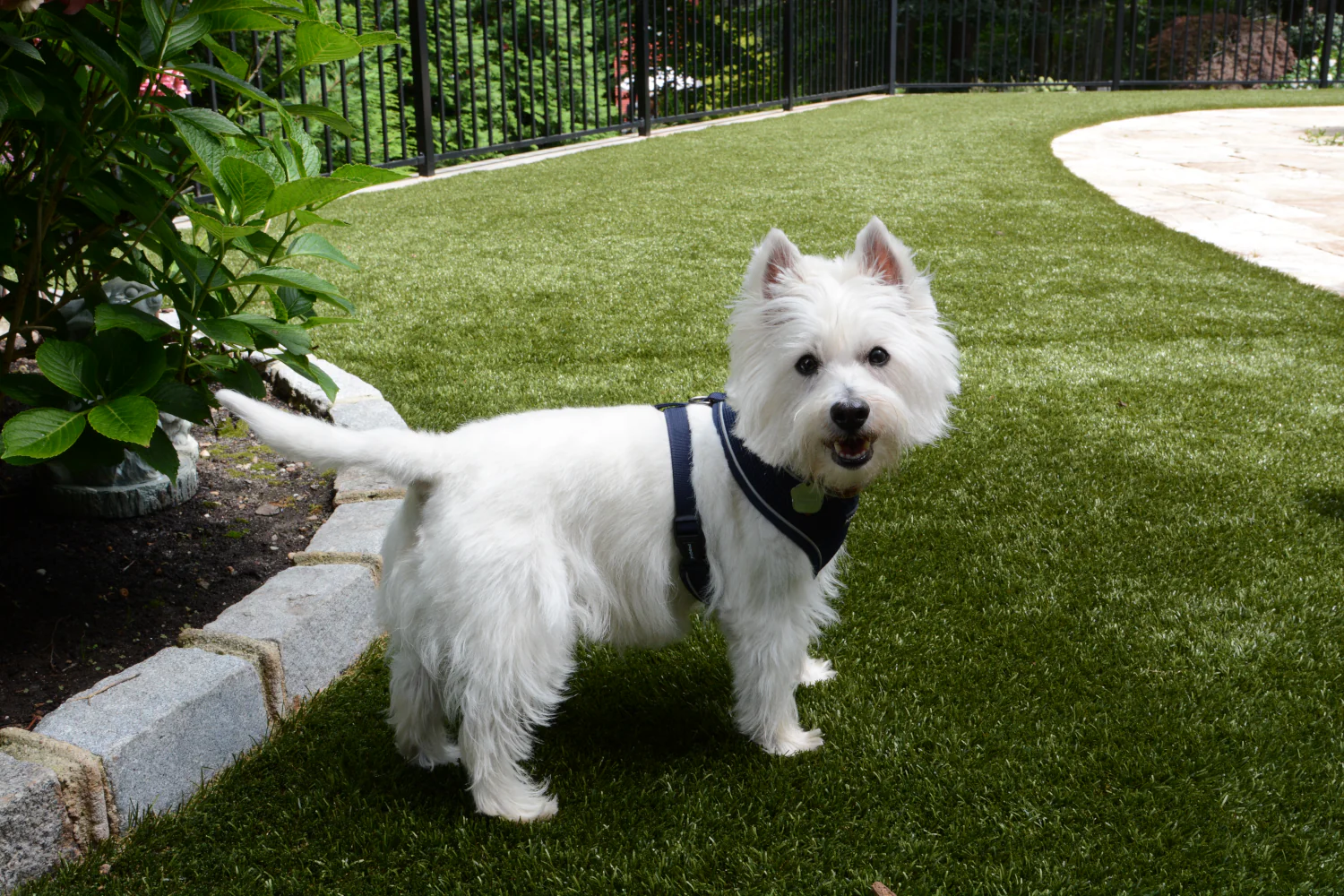How to Avoid Pet Turf Mistakes

You chose artificial grass for the minimal maintenance and tidy aesthetics — a good choice. But pets bring new challenges. Here’s a quick guide to the most common problems that happen to fake grass for dogs and exactly what to do about each of them, in simple steps.
1. LETTING SOLID WASTE SIT
What happens: A forgotten pile dries, smears, or seeps into the infill.
Why it matters: Dried messes can collect harmful microbes and leave stains.
Fast fix: Remove and throw away as soon as you can. If traces are left, use a soft brush and a spray with water to lift it out.
Habit to build: Keep a small scoop and lidded trash can near the yard for quick cleanups.
2. DOG PEE PATCHES
What happens: Dogs use the same areas and urine collects.
Why it matters: Lingering stink and discolored infill may follow.
Fast fix: Flush with clean water periodically to prevent buildup, especially if rainfall is scarce. For stubborn smells, a pet enzyme cleaner made for artificial turf might be needed when using normal sand infill. Using specialized SWG/Shaw K9 infill removes all pet-related smells.
Preventive move: Rotate play zones or set toys to spread traffic around.
3. DIGGING, CHEWING, AND NAIL DAMAGE
What happens: Dogs scratch, bite corners, or their nails snag seams.
Why it matters: Tears, loose edges, and frayed turf wear it out early and cause hazards.
Fix: Trim nails regularly and fix raised seams with ground stakes or approved bonding adhesive.
Prevention: Give dogs a single digging spot and provide toys.
4. WATER DRAINAGE PROBLEMS
What happens: Water pools after storms or heavy use.
Why it matters: Standing water areas encourage mold, fungus, and mildew and feel unpleasant for pets.
Fast fix: Remove debris from drainage channels. Check seams near drains to check for blockages.
When to call a pro: If the same spot stays wet repeatedly, the installation may need correction.
5. MATTED TURF FIBERS
What happens: Frequently used areas start to look worn out and flattened.
Why it matters: Compressed infill keeps dirt in and makes turf harder.
Fast fix: Lift blades with a soft-bristle broom.
Routine: Brush heavily used turf once a month to keep blades upright.
6. USING THE WRONG CLEANING PRODUCTS
What happens: Harsh chemicals weaken the backing and fibers.
Why it matters: Discoloration, loose seams, and shorter lifespan.
Fast fix: Flush with water thoroughly and use pet-safe gentler turf cleaners. A diluted vinegar solution works for many smell problems.
Note: Avoid strong chemicals and stiff brushes.
QUICK CARE CHECKLIST
- Remove droppings within a few hours
- Flush urine spots at least once a week
- Brush high-traffic zones monthly
- Keep food and messy treats on a mat
- Use enzyme cleaners labeled safe for synthetic turf
- Check drainage after heavy storms
NEED A DEEP PROFESSIONAL CLEANING
Little habits keep your artificial turf for dogs clean, smelling fresh, and staying neat. If you prefer assistance — from a deep clean to examining drainage or topping up infill — Southwest Greens can do the hard work so your yard remains pet-friendly and guest-ready. Contact us, and we’ll map out the best next step for your lawn.
